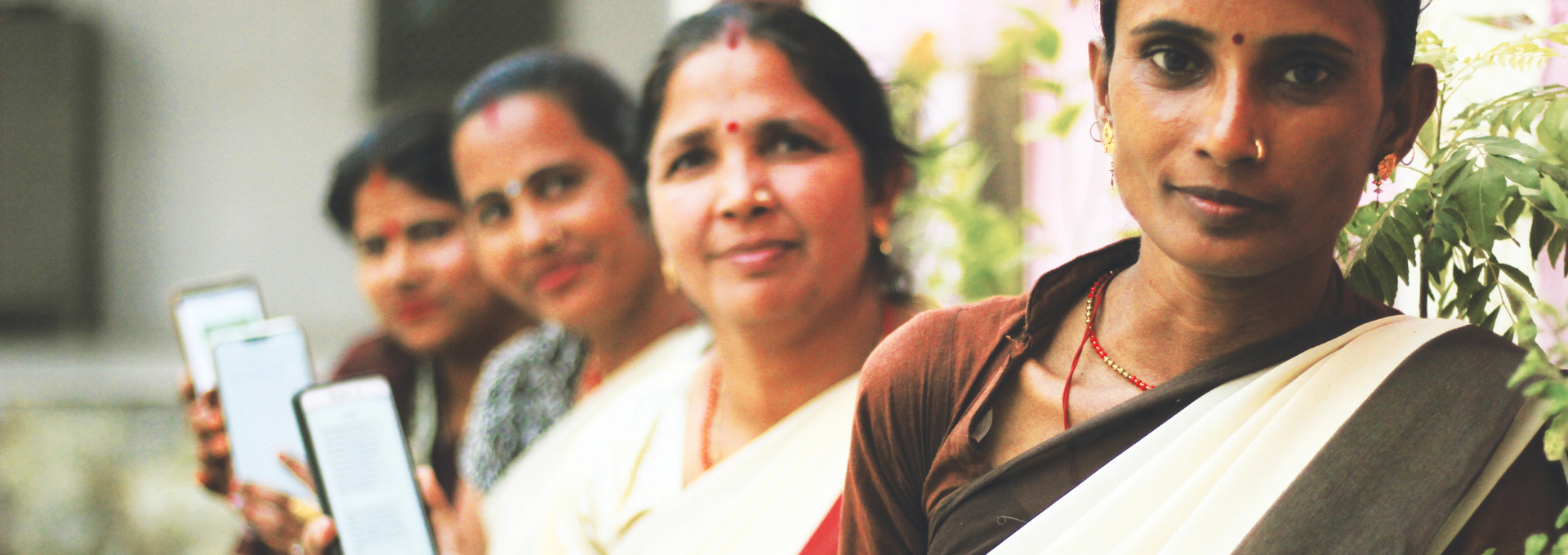
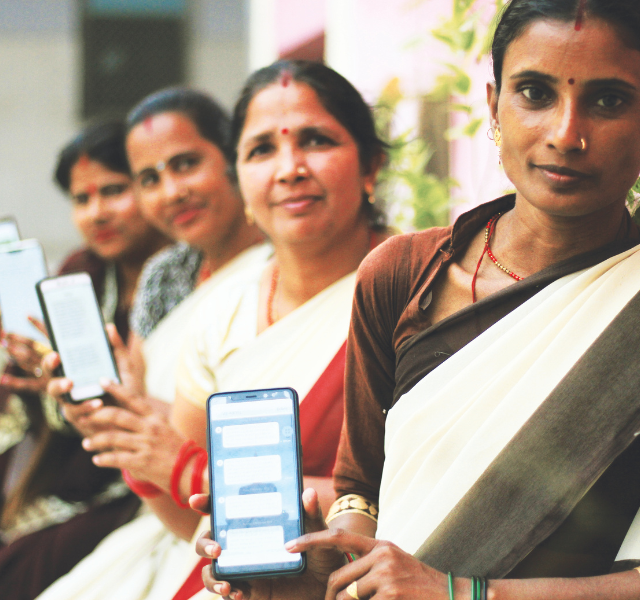
The Accredited Social Health Activists’ (ASHA) programme was initiated in 2005 under the National Rural Health Mission (Ministry of Health and Family Welfare, Government of India (GoI)), with an aim to improve maternal and child health outcomes— particularly among women and children in the community. Under the programme, Community Health Workers (CHWs), termed as Accredited Social Health Activists (ASHAs), were recruited from within the community, trained to create awareness on health and its social determinants and mobilize the community towards local health planning and increased utilization of health services. ASHAs are provided with ‘honoraria’ under different national health programmes for the tasks that they undertake. The GoI has introduced a performance-based incentive system that links the amount of remuneration to the activities completed by the ASHAs.
Uttar Pradesh (UP) has approximately 150,000 ASHAs who cater to the vast 220 million population of the state. As per the GoI norms, one ASHA is deployed per 1000 population. The latent incentive system for ASHAs that was in place in UP had some challenges:
An IT-enabled application was designed as an apt solution to bring transparency and efficacy to the incentive system. In consultation with the Government of Uttar Pradesh (GoUP), this IT-enabled application was envisioned and conceptualized with the following objectives:
The Government of Uttar Pradesh, with support from the Uttar Pradesh Technical Support Unit (UP TSU), a unit led by the India Health Action Trust (IHAT) in partnership with the Institute for Global Public Health, University of Manitoba, Canada, rolled out an IT-enabled real-time ASHA Incentive application in UP in September 2018. This is an integrated android and web-based
application developed to track and monitor ASHA incentive payment and performance. This application also includes Incentive Payment to ASHA Sanginis – a new cadre introduced by the Government to oversee, support and supervise ASHAs.
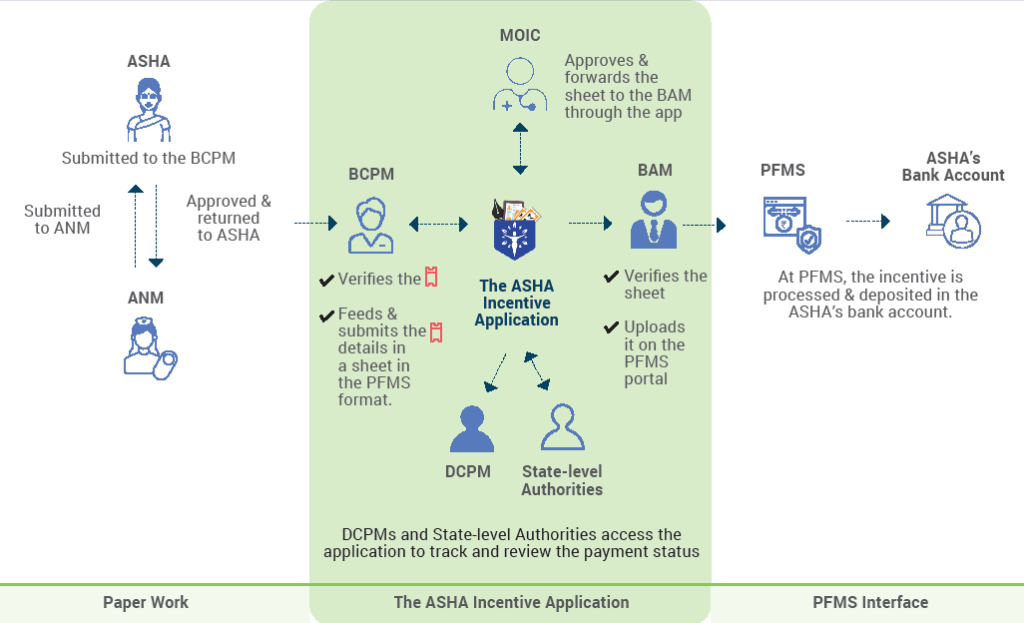
Figure 1 depicts the workflow of the ASHA Incentive Application. ASHA fills the incentive voucher and submits it to the ANM for verification. ANM verifies, approves and sends the voucher back to ASHA. After receiving approval from ANM, ASHA submits the voucher to the BCPM. The BCPM feeds the voucher details in the ASHA Incentive App in a format in line with the PFMS system. After verifying the details, the BCPM submits the payment sheet through this online portal. This payment sheet contains Headwise and ASHA-wise information on the incentive to be paid. The MOIC receives the payment sheet in the Head-wise format, which the MOIC approves and forwards to the BAM. After verifying the details, BAM uploads the approved payment sheet on the PFMS portal. In this way, the payment is processed to the ASHA’s bank account. In case of any discrepancy observed, the MOIC can reject the payment sheet. In that case, the payment sheet goes back to the BCPM with remarks from the MOIC. Generally, the duration from the time the ASHAs submitted their voucher to the time they receive their incentive was reduced to about 15 days.
The ASHA incentive application reduced the time period and increased the transparency for the ASHA to receive her incentive. The user-friendly online dashboard of the ASHA Incentive application helps identify the real-time disbursement status under different heads at the state-division-district –block- ASHA level. This helps in tracking the delay in payments. The District Community Process Managers and the NHM community process team at the State level also access the ASHA Incentive Application portal. They can monitor and track the delay in the process and can accordingly follow up with the respective block/district level authorities.
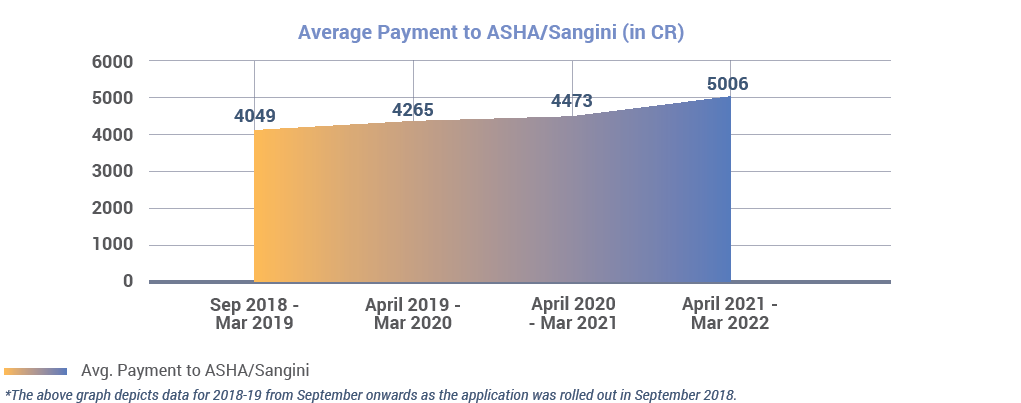
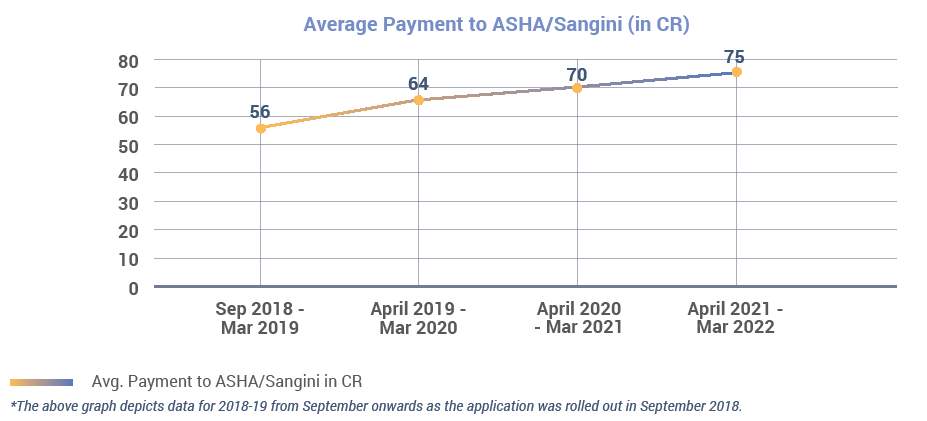
Earlier the BCPM/MOIC dashboards allowed one-time single approval; so they had to wait for vouchers to be submitted by ALL the ASHAs. Now, flexibility has been given to BCPM/MOIC/ BAM for ASHA based entry, approval and payment processing; wherein, they can enter or approve the vouchers at any given time.
The ASHA Incentive Application has been integrated with the GoUP Financial System – FAMS (Financial Accounts Management System); which in turn has been integrated with the PFMS. Through this integration, the data seamlessly flows from ASHA incentive app to FAMS, which further connects to PFMS for payment release. The transaction gets automatically captured which helps in tracking the payment status and keeping the ASHAs informed about the same.
The Application has also been integrated with the Health Facility Registry (HFR) Application4 of Ayushman Bharat Digital Mission. Due to this integration, the facility level codes are mapped across the ASHA Incentive Application making it capable of integrating with any other GoI portals in future.
A Budget Module has been added to the Application; wherein the District Community Process Manager (DCPM) adds a notional budget Block wise and FMR wise. The District Account Manager (DAM) approves the allocated budget; which gets reflected to the BCPM and BAM at block level to further help in incentive release as per funds availability.
After the successful rollout of the ASHA Incentive App under the National Rural Health Mission, GoI has decided to initiate and set up the application for the ASHAs and ASHA Sanginis serving the urban population of Uttar Pradesh. A pilot of the Urban ASHA Incentive Application was done in Lucknow district in October 2020 and has been successfully rolled out across all the 75 districts of UP.
The Government of India recognized the ASHA Payment App at the 6th National Summit on ‘’Good and Replicable Practices and Innovations in Public Healthcare System in India” at Gandhinagar, Gujarat, in 2019.
Currently, the data entry, review and approval at BCPM stage has been digitised, while the ASHAs still submit paper-based vouchers. Digitization is now planned at the ASHA level itself. Through this, ASHAs will be able to enter the voucher details on the app in their mobiles/tabs which will get reflected in the BCPM dashboard.
The application was developed to address the delay in payments to ASHAs. Earlier payments were disbursed manually; hence, it was challenging to gauge at which stage of processing the delay occurred and whether the ASHAs had received the full amount due against the submitted vouchers. The user-friendly online dashboard of the application helps in identifying the real-time disbursement status under different sub-heads, even at the lowest level.
Dr Rajesh Jha, General Manager – Community Process, NHM, Uttar Pradesh
I have been working as ASHA for my village since 2007. Before the ASHA Incentive Application was initiated, payment was made through cheque, and we were not clear on how the payment was calculated. Many times we experienced partial payments and delays in payments. After the application came into existence, things have changed for the better. We are notified through a message about the payment being released task-wise. It is very satisfying to receive our hard-earned money on time.
Shashi Prabha, ASHA, Jasda Village, Ranipur Block, Mau District, Uttar Pradesh